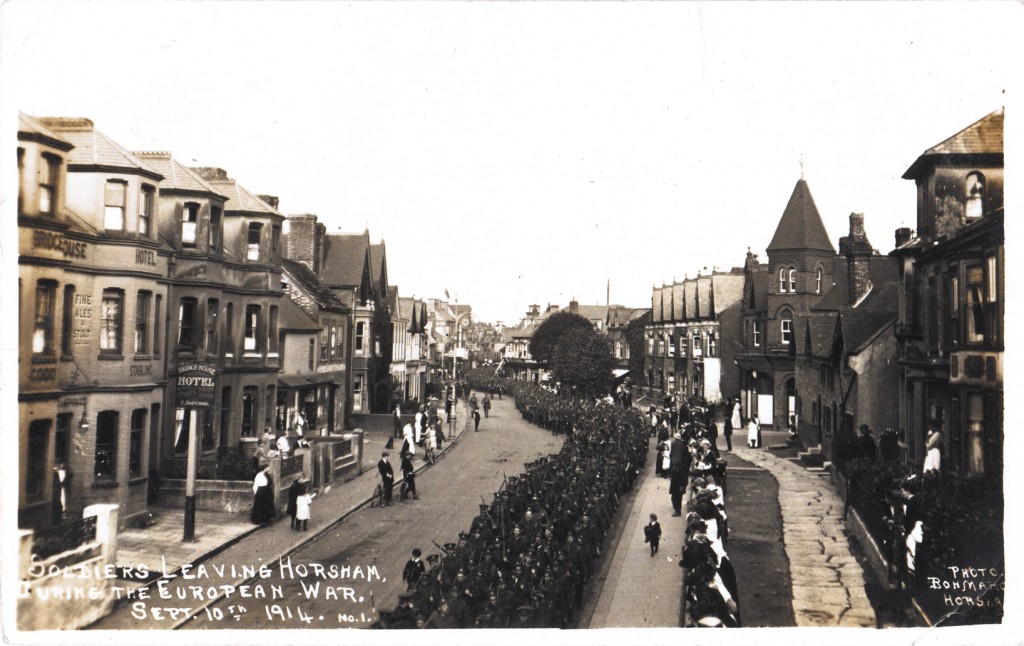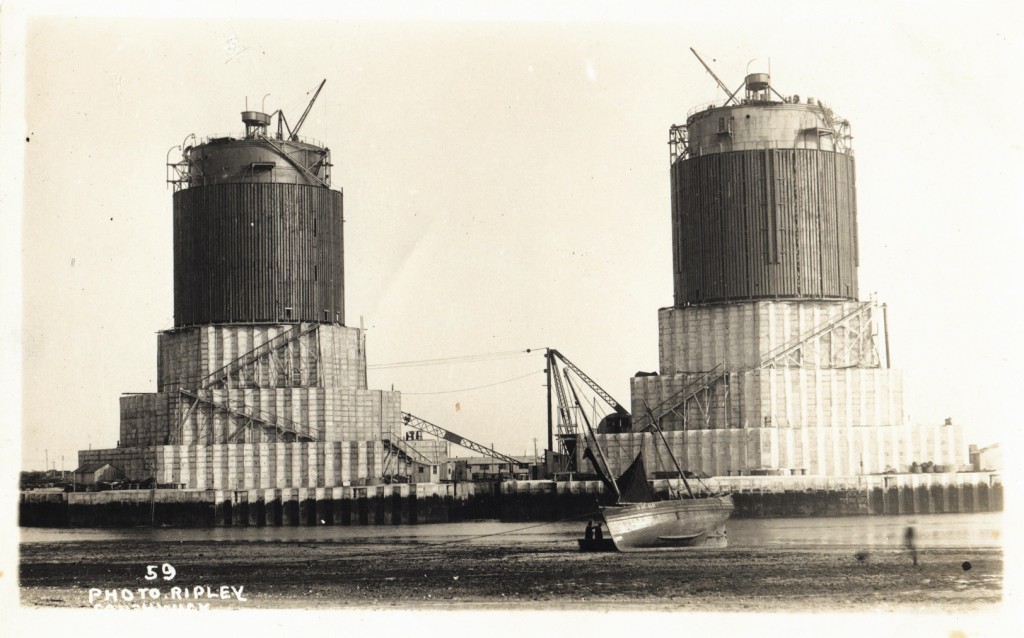
The belle époque of postcard sending was between 1899 and 1914. At the height of this craze, a reported average of more than 723,000 postcards were sent every day. Each card was delivered the following day and all for a halfpenny a time. As people posted cards they also started to collect them. With an estimated 264 million postcards delivered in a year, it is no surprise that photographers and publishers popped up in towns and villages across the British Isles to cash in on this boom.
Postcards were printed lithographically, photographically and in letterpress, some were even hand-coloured or tinted. With such a rich diversity of photographers and printers, there is a rich variety of postcards to delight the collector. If your passion is social history, saucy seaside humour, vintage cars, topography, railways, churches or almost any other subject you can think of, there will be postcards for you.
Due to Post Office regulations, postcards started out smaller than the familiar size most of us would recognise today. These ‘court-size’ postcards were only allowed to have the address on one side, so any message would have to be shared with the publisher’s image. In 1902 the Post Office changed their rules, allowing for the more traditional postcard size. At the same time a dividing line was introduced on the reverse, allowing space for the address and, for the first time, a message too, freeing up the entire front for a pictorial design. Postcard collecting was the hobby of many Edwardian ladies in particular but it waned with the outbreak and experience of the 1914-18 Great War. The light-hearted days, of which postcards had been an expression, were passing.
Toovey’s postcards, books and paper collectables specialist is my brother, Nicholas. Thanks to Nick’s personal interest in postcards, his specialist expertise and continuing promotion of sales of paper collectables and postcards, Toovey’s are one of only a very few auctioneers to have been accepted for membership of the Postcard Traders Association (PTA) in the country. So it is to Nick that I turn to find out what makes a postcard valuable. “Condition is very important,” says Nick. “Prices are considerably higher for mint examples than for worn cards. Be careful though, – a very rare card can still be valuable even if not perfect. Most cards will have the odd bump after almost 100 years, which is often acceptable to collectors who tend to favour these older cards. Perhaps more important is the subject and rarity of the image.”
Photographic postcards are the ones which most delight Nick. “They provide an accurate and unedited view of our country’s past – familiar scenes, now changed, and social history a century ago.”

There are plenty of interesting postcards relating to Sussex. Take, for example, the two postcards illustrated; both date from the time of the Great War. The first was part of a collection of postcards relating to Southwick in Sussex. The image was taken by the photographer Joseph Gurney Ripley. It depicts two huge structures, which were constructed at Shoreham and Southwick in Sussex. These forts were built as part of a proposed chain of twelve, which would have been sunk between Dungeness and Cap Gris Nez, to deter U-boat attacks along our shores. Building began in June 1918 under a cloud of secrecy and Sussex locals nicknamed them ‘The Mystery Towers’. The Armistice came in November 1918 and they were never deployed for their original intention, although they were still being constructed as late as 1920. One of the towers did become the Nab Tower off the Isle of Wight. The collection of 267 postcards sold at Toovey’s for £2,900.
The second is titled ‘Soldiers leaving Horsham during the European War September 10th 1914, No.1’ and was published by Bon Marche, a company established by Frank C. Lewis, who in the years preceding the First World War became Horsham’s leading postcard maker. Many of these postcards are notable because of the quality of the photographs. Their images included towns and villages across the west of Sussex. A copy of this card could be bought today for about £15 at a postcard fair.
Where should Sussex collectors begin if they would like to explore collecting postcards? “I’m always pleased to advise,” Nick explains. “The important thing is to see as many postcards as you can and compare one with another, so that you begin to be able to see differences in quality between images, publishers, subjects and condition and to see how these differences affect their value. When you are starting off, though, always ask advice. Those involved with postcards are usually delighted to share their experience.” Aside from Nicholas’s specialist auctions, the three main postcard fairs locally are held at Haywards Heath on the first Saturday of every month, Shoreham every other month and Horsham once a year. A valuable resource for postcards of Sussex interest is the website www.sussexpostcards.info.
Nick is presented with endless albums of postcards in his work; does he ever tire of them? “No,” he replies without hesitation. “I never know what I will find and it’s always exciting to discover images which I haven’t seen before. People bring in albums for sale in my specialist auctions all the time and they are often surprised and delighted by how much they are worth. It’s a pleasure to share one’s knowledge and passion for postcards with others.”
Whatever your interests, postcards provide an opportunity to acquire wonderful images and a glimpse back into the past.
Toovey’s next specialist auction of postcards and paper collectables is to be held on 6th August 2013 and Nicholas is accepting entries until 3rd July 2013.
By Revd. Rupert Toovey. Originally published on 12th June 2013 in the West Sussex Gazette.